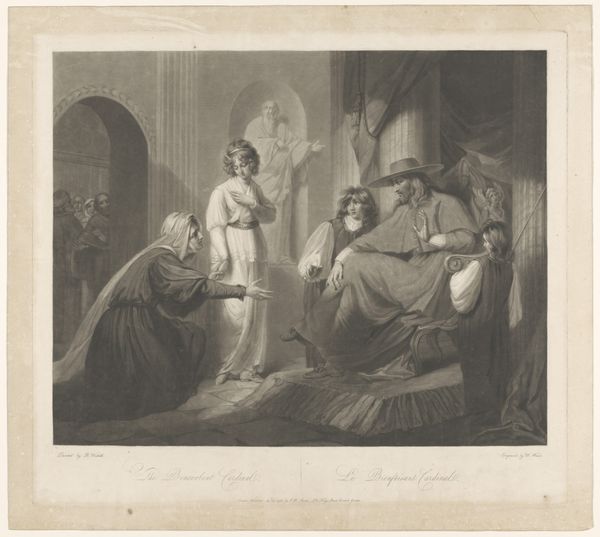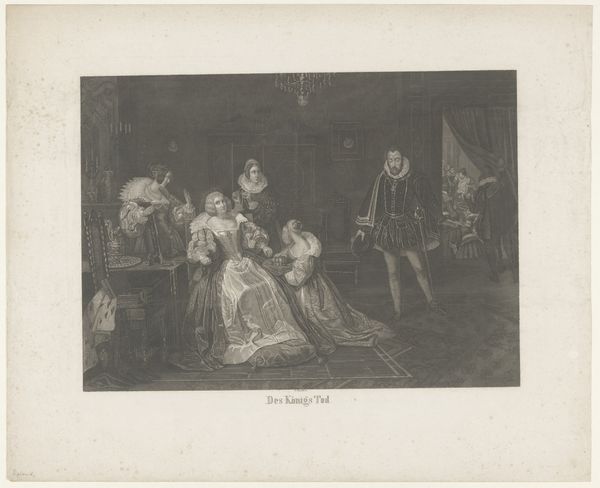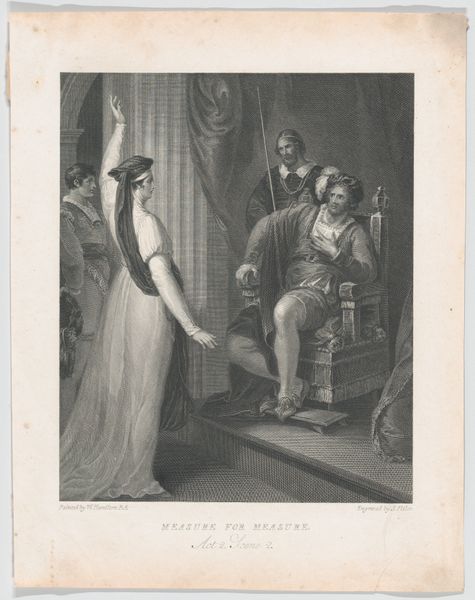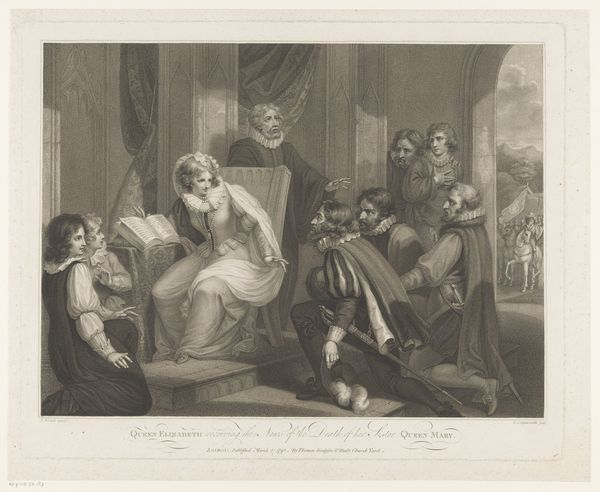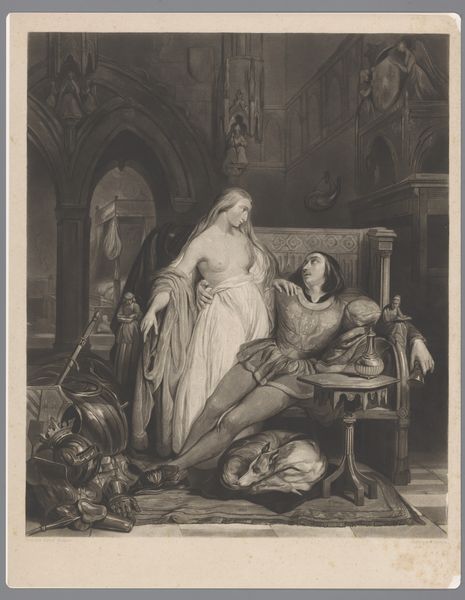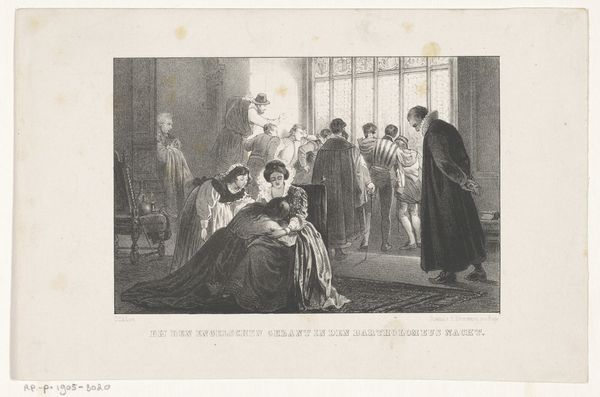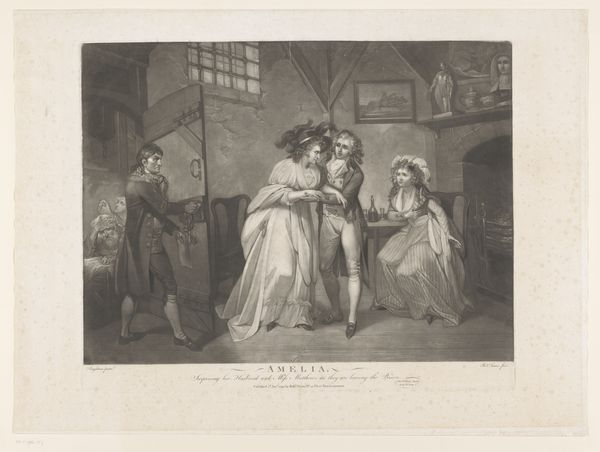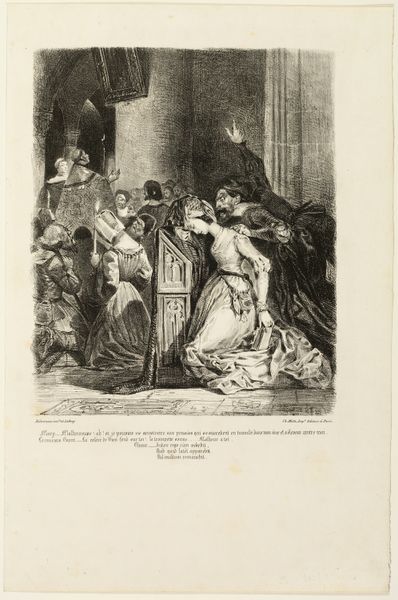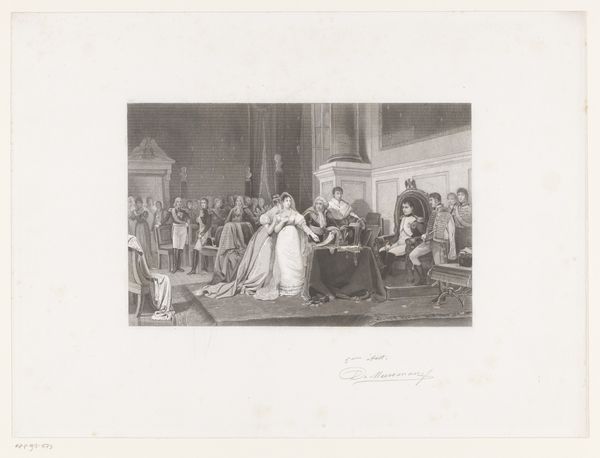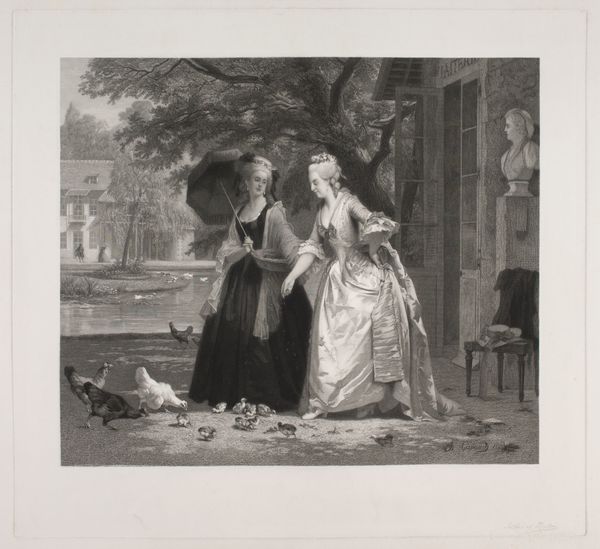
print, engraving
#
narrative-art
# print
#
archive photography
#
historical photography
#
genre-painting
#
history-painting
#
academic-art
#
engraving
Dimensions: height 388 mm, width 476 mm
Copyright: Rijks Museum: Open Domain
Curator: Stepping into history, we have here a print called "Maria I Stuart en haar secretaris" created somewhere between 1798 and 1871 by Jean Pierre Marie Jazet, now residing here at the Rijksmuseum. Editor: Oof, heavy sigh. I can practically taste the oppressive silence in this room. There is some intense loneliness happening. It just emanates this somber melody. Curator: It's definitely a piece soaked in the narrative and drama of history, something common in academic art, that's clear enough. Looking at the overall composition, what elements are most evident? Editor: I think its symmetry grabs you first, you know? The architectural columns and arches on both sides almost mirror the placement of the secretary playing his lute opposite Mary, who's poised near the table. It divides the interior space and echoes what feels like a restrained theatrical set. Curator: Good observation, the artist emphasizes how they seem almost detached from one another within this intimate space. But look at the sharp engraving technique— the fine lines create detailed texture. What do they convey? Editor: Absolutely. The formalist grid adds depth. Also the folds in Mary’s gown, her lace collar, the tapestry thrown across the table. It all amplifies their luxurious surroundings yet enhances their vulnerability. But the musical interlude in the somber space doesn’t bring any levity... if anything, it isolates her more. Curator: Very insightful. You see that little statue behind them, over her shoulder? To me, it hints at themes of virtue, the ideal ruler she could never become... the gaze on her face tells it all, to some extent. She looks lost in her head. Editor: I agree... the visual metaphor hits hard. With Jazet working in an engraver’s space, he might emphasize narrative details for emotional power, using architectural details to evoke the queen’s imprisoned state. Even if this moment depicted did not really occur historically, it resonates emotionally like a poem on longing for freedom. Curator: And that is where history is reinterpreted as an exercise of sentimentality, I find, rather than cold fact. Overall, this engraving becomes an archive of the era's view of a tragic figure, with the artist playing his instrument to give depth to Mary's silent struggles. Editor: To echo that: sometimes it's not the exact historical truth, but how these reverberations echo in the room that matters!
Comments
No comments
Be the first to comment and join the conversation on the ultimate creative platform.
